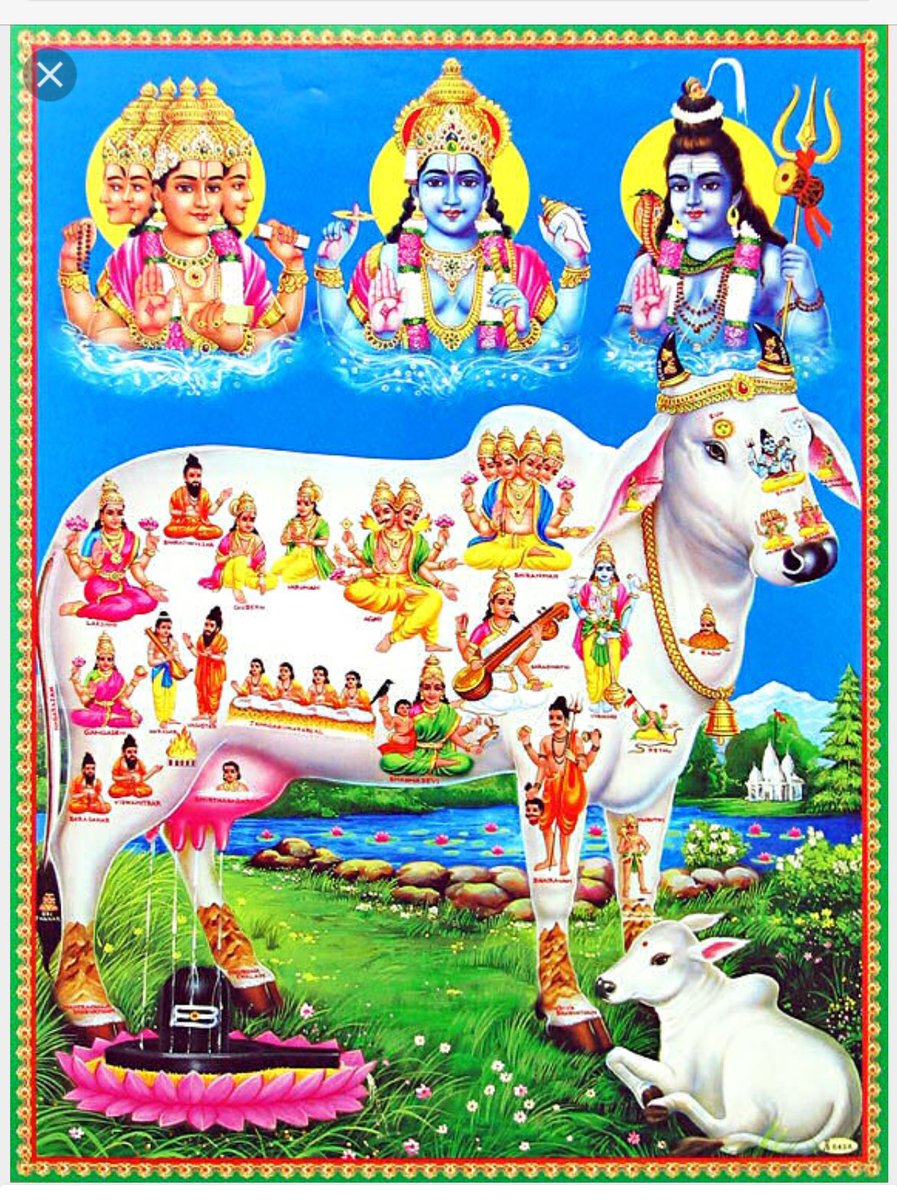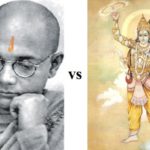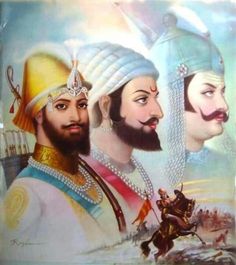
Following our Introductory articles on Rajadharma, we briefly made a foray into the realm of Sikh Dharma. The reason for this is because for all too long, there has been mistrust and misunderstanding between the various Dharma Sampradayas of Bharatavarsha. This is particularly obvious in the Punjab and is one of the reasons why the time has come for a common consensus to be forged.
As is well-known, not only Bharat Ganarajya, but other key constituents of Bharatavarsha (such as Nepal and Sri Lanka) are facing existential threats, not only to political order, but the moral order itself. In this environment of mistrust, there are nationalists and separatists of all-sorts. Hindu nationalism in India finds distrust in the Buddhist nationalism of Lanka. Sikh separatism in the Pancha-naada is counter-balanced by Dravidianism in Tamil Nadu. How to navigate the myriad interests, viewpoints, and counterpoints that face Indic Civilization?
Pakistan is our ‘brother’, government must work to improve ties, says RSS (@meetuttam reports) http://t.co/ug9sf0IDdR pic.twitter.com/BSlmQSoTrT
— Hindustan Times (@htTweets) September 5, 2015
A subset of a subset of a so-called sanskari sangham has managed to convince unsuspecting Hindus of all castes that its ideology is the only way to respond to ‘hinduism khatre mein hai“. It had been a useful election strategy in Jammu and Assam, where Hinduism in fact is in such a state. But what has been the result? Prime Minister Modi himself may be doing what he can to operate in a difficult space, but it is well-known this self-same sanskari sangham is not so well-disposed to him.
The Nagpur lobby and Modi/Shah duo is at loggerheads. These statements are made to screw the mandate for Namo and put Gaddari in
— Nishka Krishna (@NishkaK) February 18, 2019
There are those who may protest that this organisation is “totally kaastluss” and “uber-nationalist“. That may in fact be the case at the bottom worker level—but what about the top leader level? Rumour has it that it is a different story, and may not be so ‘kaastluss‘, or even Hindu after all…that is why Hindus must Reject Hindutva & Revive Rajadharma.
This may stun many BJP supporters (and even innocent, well-meaning supporters of a certain ‘volunteer organisation’), but this is a statement that is not idly made. Let us set aside the history of the proponents of the ideology of Hindutva, which is mired in controversy, and focus on the obvious. The blatantly apparent fact is that in a nation of Sikhs, Jains, and Buddhists, all of whom are practicioners of Dharma, Hindutva is—despite claims to the contrary—exclusive to Hindus. In order to ‘include’ others, the exonymic term itself is diluted to return to its original geographic meaning. So Hindutva does not even protect Hinduism.
A Raja/Leader has to be like a leader following his sva dharma of leading and defeating enemies and defending his followers and people at large, not act like a sanyasi showing misguided renunciation or humility, even sanyasis have to follow their rules,
— krishnarjun (@krishnarjun108) February 24, 2019
Second, even the very word ‘Hindu’, is problematic. Yes, we’re all familiar with the ad nauseam assertions of Hindu coming from Hepta Hindu and Sapta Sindhu, but the reality is, we did not give ourselves that name, and it is not originally our word. True, the term Arya (to which we are the rightful inheritors) is problematic due to the foreign history of Nazi scoundrel appropriators, but at least it is the correct term per the Vedas and Puranas.
Dharmic Civilization did begin in the Sarasvati-Sindhu Valley, in Brahmavarta, before expanding to Brahmarishi desa, Madhya desa, and Aryavarta. But the final expansion gave us all the name Bhaarathavarsha. Hence our nation, due to Jada Bharata and later Bharata Daushanthi, takes the name Bhaaratha. But even this applies only to those of Indian blood, who may not necessarily practice Dharma. Hence, the term Dharmika becomes all important. Despite the claims to the contrary, Hindutva is not about Dharma, but is a means to digest it.
While they were seeking an Arctic origin and digesting the flesh of cows, the precursors and puppet-masters of “Hindutva” were digesting the Dharma into an ideology that can be manipulated by anyone, rather than preserving a philosophy outlined by the Divine One. Ideology is for idiots, while Philosophy is for wise (yet practical) philosopher kings. That is why Rajadharma is the need of the hour.
There are those who do their utmost to ignore rajadharma or treat it as ‘pie-in-the-sky’ because they know unlike their hindutva, which is an ideology, rajadharma is a philosophy. An ideology can mean anything based on convenience (of political operators) whereas philosophy means very specific things based on a set of principles. Hindu & Hindutva are not even our own words. The beginning of wisdom is to call things by their right names.
Third is the question most krypto-conservatives wish to ask which is “Which Dharma??!”. But as even the most venerable Acharyas have asserted, varnashrama dharma was not the be-all-end-all of Dharma. Above it is the critical concept of Saamaanya Dharma.
Samanya Dharma is common for all Varna and Asrama such as Brahmacharya, Grhasta, Vanaprasta and Sanyasa.#Periyava #Hinduism
— Sage of Kanchi (@haraharasankara) December 24, 2018
Dharma is the righteous upholding of cosmic order Rta which is the expression of Truth (Satya). It is the everyday basic duty of strong protecting weak, younger respecting elder, man respecting woman, and society living in harmony. The problem is, the protocol droids of ‘hinduism’ have done their darndest at obstructing the practicalities of dharma with ritual trivialities. But one need not reject ritual to make Dharma practical—one only need not obsess about ritual and prioritise the practical to protect the traditional.
I pray to God Parameswara to make Dharma a functional proposition in India and to become a guiding light for the entire world!#Periyava #Hinduism
— Sage of Kanchi (@haraharasankara) February 13, 2018
Rajadharma is that functional proposition of Dharma. Until Rajadharma is restored as the central governing principle for politics, statecraft, and governance, expect the self-same self-defeating “chanakyanism” that is motivating the body politic of dharmikas today. People forget that Chanakya himself hired foreign invaders to overthrow the Nandas, and his over-clever politicking resulted in his ending up condemned to burn on his own pyre. That is why rather than Chanakya Niti, it is Krishna Niti that is the need of the hour. Rajadharma is protected by Rajaniti and Koota Niti.
Escapism is never a solution to conflicts of the world – Strengthen yourself Physically, Mentally & Emotionally to deal with one & make this world a better place to be – Divine duty given to protect dharma
Dont be inspired by an Ashoka, But a Krishna
— Raguraman B (@ragub6) March 24, 2019
There are no popes in Vedic Dharma. Kshatriyas are barred from vedic custodianship and Brahmanas are barred from political power. And yet, the proponents of Hindutva seem to believe just the opposite—when it suits them. Ironically, the loudest proponents of varnashramadharma are the ones most inclined to violate it. They like it only as much as it gives them pretext to lord over so-called lower castes, while they themselves crave power—calling for, yes that’s right, a ‘priest king‘. Ministers are not there to ‘guide kings’, rather ministers exist to obey kings. Rajas were the traditional heads of Hindu (sanaathani) society, not slaves to scheming court eunuchs.
The Hindutva movement has erected a big hijadon ka fauj, these people are co-conspirators with Congress party and the British in the degradation of whatever good civilization in Bharat has produced
— krishnarjun (@krishnarjun108) January 1, 2019
True, our society has celebrated venerable rishis like Vasishta Mahamuni who combated arrogant kings—but things have also gone the other way as well when there was an imbalance of dharma. Ambareesha‘s humbling of Maharishi Durvasa is a famous case.
Dharma is not about caste triumphalism, but about societal harmony. This harmony is premised on order, both political order (krama) as well as moral order (Rta). Rajadharma is tasked with protecting this order, even at the cost of the raja.
yadruchaya chopapannam swarga dwara mapavritham
sukinaha kshatriyaha partha labhanthe yuddha idrisham – BG 2-21Kshatriyas rejoice to fight a battle of this kind which destiny brings as it widely opens doors to swarga
This is the Kshatriya attitude explained in Bhagwad gita
— krishnarjun (@krishnarjun108) February 27, 2019
Therefore, Hindutva, as others have stated, is nothing but politics as usual. For all the talk of the much ballyhooed “practicality” of hindutva, what has happened in Jammu & Assam? For all the talk of the incorruptibility of a certain organisation, why is its inexperienced CM in Maharashtra closing down Hindu schools left and right via Right to Education (RTE)? For all the talk of defending society against evangelism, why is this organisation dedicated to uproot a politically neutral (but non-evangelist) vote-bank politics practicing politician, through the assistance of an evangelical party? It is meant to benefit a select group (each one fooled by a higher echelon in a ponzi scheme to spiritual oblivion ultimately benefiting videshis).
https://twitter.com/DeepakJonna/status/845887203758686208
As Acharya Apastamba stated, one must remember, there are no rishis in the Kali Yuga. A wise king (or political leader) does respect the advice of the learned, but he has no obligation to take it, particularly if it violates the performance of his own dharma. In one of the most maddening debates of our time, there are those who seem to believe that a leader can be either Rama or Krishna, but the reality is, Kali Yuga calls for netas to be both.
Ram represents the spirit, & Krishna represents the protection of it, as he protected Dharmaraja. A true Kali Yuga Dharmaraja can’t just engage in politics for its own sake, but must seek to use politics to protect his prajas. That is the value of Rajadharma. Rajaniti makes government possible, but Rajadharma makes government purposeful. Where there is only Rajaniti, there is mistrust and political backstabbing (even useful allies are cast aside due to greed for power). Isn’t that what we have now?
Where there is Rajadharma there is trust (as there was with the 4 sons of Dasaratha). Rajadharma itself gives an order that produces harmony. A place for everyone and everyone in his place (whether that is due to caste as in the past or character as in the present, is another matter). But that is the problem with Hindutva, it has no need for all of that. It engages in racial politics that can even deprecate the sanctity of the cow.
Seeing the cow as collateral damage in war is one thing, actively denying its status as ‘gaumata’ as this hindutva ideologue did, is another. And that is why Hindutva must be rejected. If the Holy Roman Empire was neither Holy, nor Roman, nor an Empire, then there is nothing ‘Hindu’ about ‘Hindutva’. It is merely another ideology meant to rationalise the domination of an adharmic centralised institution masquerading as a “self-help” organisation while seeking to dictate to modern democratic “rajas”. In effect, while claiming to fight against churches, this self-help sanskari sangham is seeking to build a church of hindutva. It’s why for all the talk, there’s never any implementation of policy. The matter is kept alive, in perpetuum, while milking it all the way to the (vote) bank.
It is why they can even foist foreigners as ‘acharyas’, because in their lust for power, they have no problem becoming middle managers for foreign political leadership. After all, that is what they have done all these years. Foreign spiritual leadership eventually leads to foreign political leadership. Surely so-called nationalists could not have forgotten this lesson so soon…
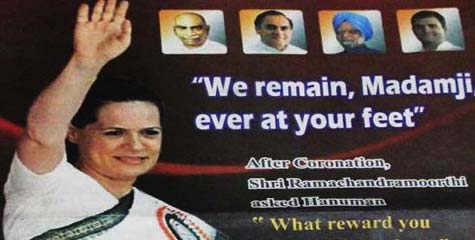
This does not mean disrespecting foreigners. But is does mean native self-respect. Between xenophobia and neo-colonial slavery is an alphabet soup of options. Choose the path of self-respect and understand the actual stipulations of Vedic Dharma, then select your appropriate vedacharyas.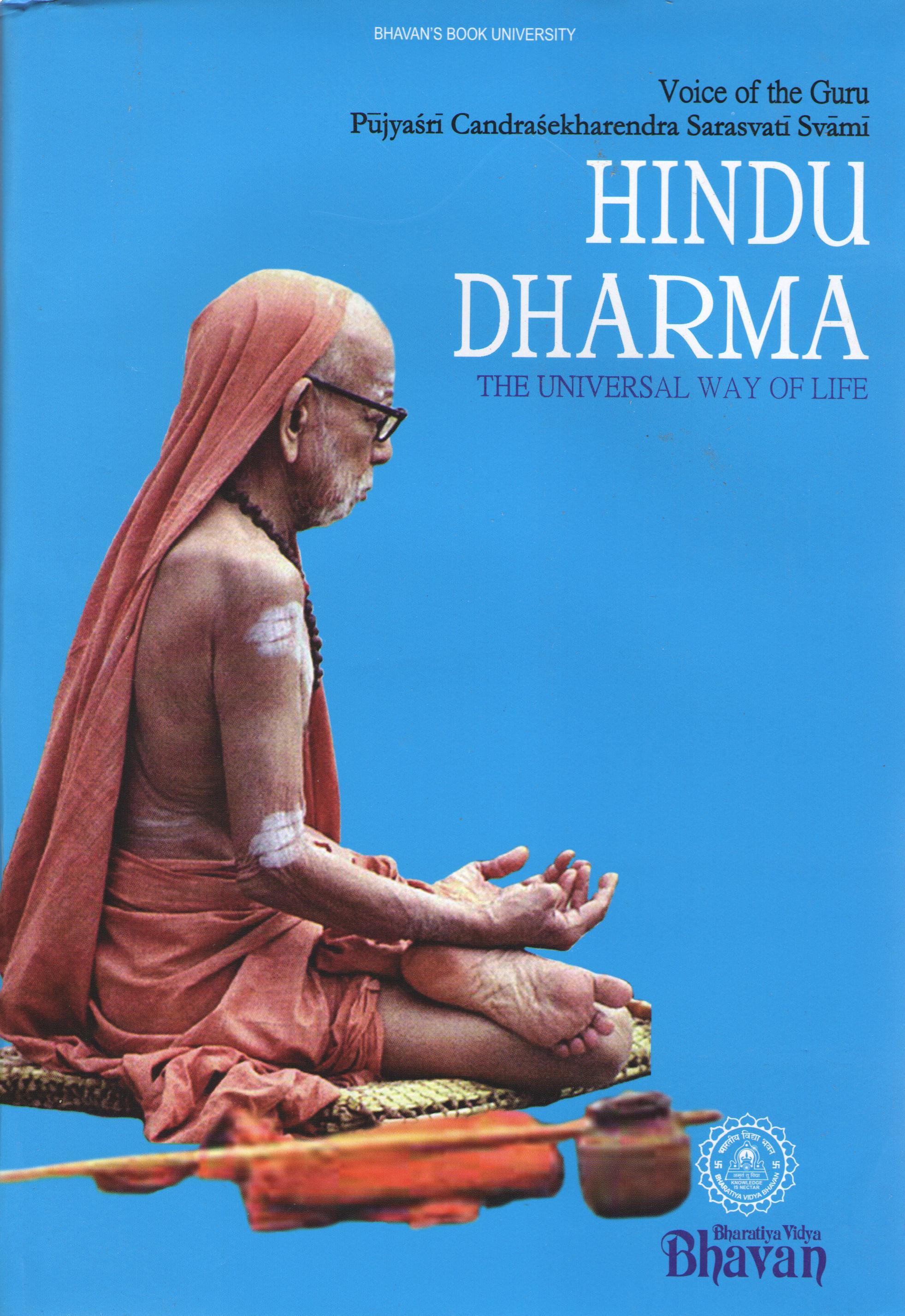
Some may argue that the era of rajas is over, hence rajadharma must be replaced by hindutva. But this is nonsense. By that measure, one can argue that AI can replace Acharyas or vaidika brahmanas, and robots can be tasked to perform shrautakarma. What matters is bringing the spirit of a philosophy to the current times. Karmakanda can’t be “reformed”, and neither can Rajadharma. The implementation may be more limited, but one can’t altogether be replaced by another.
Similarly, Rajadharma can simply be understood as Dharmic Governance. Ancient India featured many different forms of government, from republics to even small democracies. But the spirit of Rajadharma was there, monarchy or otherwise. Therefore, in the present democratic-republic, each politician, from the President and PM down to the MP or CM down to the MLA or Municipal commissioner, is tasked with the spirit of Rajadharma (or at least an element of it). Rajadharma is ultimately determined by Rajas (democratically elected or otherwise). This is the case from Manu down to Rantideva down to Rama down to Krishna down to PM Modi, because competence is determined by those who actually do. Gyaan is easy to give, political performance, policy implementation, and administrative outcomes are hard.
We may be a ways away from the Chakravarthi Maharaja that is all-too-commonly talked about on trad twitter. But for that to happen, not only do would-be mantris and amatyas need to understand their place (and replaceability…), but so do would-be rajapramukhas, samantas, nayakas, mandaleshvaras, nagarapalas, and graama vrddhas. If you rely on a wishy washy ideology that demands your vote and delivers nothing, you get maximum politics and minimum governance. But if governance itself, and the delivery of good administration becomes the focus, then policy, performance, & protection of public interest replaces ideology.
https://twitter.com/TrulyMonica/status/1109746482427715584
Some may also argue that the kshatriyas of old are all-but extirpated, with all but a few genuine lineages extinguished. But the point of rajadharma is that leaders must be kshatriyas by gunakarma, and not necessarily by janma. As Bheeshma himself averred (at the behest of Lord Krishna), in the Kali Yuga, one who upholds Rajadharma himself becomes the rightful leader. Formal abhisheka is no bar to actual leadership (ritual is another matter). As such, one can see what hindutva has produced and what by-birth obsession has produced. Focus on character and competence and conduct, and true kshatriyas as well as real practicioners of the dharma of rajas will reveal themselves.
All this is also why casteism is so dangerous (and punishable per Sukra Niti). Even if you don’t believe in varna samkara or in marriages other than the arranged variety, understand that if you wish for dharma to be restored, you and caste must also practice it correctly—not simply use it when it suits you or to inflate your own undeserved ego. True, there are many pseudo-Indians who annoy nationalists (who aren’t particularly concerned with morality), but that is no need to fall into the hands of pseudo-nationalists.
Pseudo-nationalists are ever eager to justify Aryan Invasion Theory and promote European Acharyas, because they believe caste to be based on race. But those of us who listen to and respect true vedic brahmanas, like Pandit Kota Venkatachalam, know that per the Vedic tradition, all four varnas were Aryas (even those called ‘Dravidas’) and are descended from Svayambhuva Manu. AIT, paganism, and even “polytheism“, are foreign constructs meant to appropriate Bharat’s heritage and exclusive claim to the Vedas. Other races and nationalities are welcome to practice a form of Dharma, but the Vedas are meant to be preserved by Brahmanas of Indian descent. At present it is Brahmin by janma and to what extent it will be by guna-karma will be determined by our traditional Acharyas in the future, not Non-Acharyas of Nagpur.
State & Society
I am merely responding to repeated calls from well wishers to:
1) Prepare successor scholars to continue.
2) Collaborate w other thought leaders.
3) Build institution that outlasts personalities.
In the process I uncovered critical failures in our community. https://t.co/9aTZXBcnDv— Rajiv Malhotra (@RajivMessage) February 23, 2019
Missing in the long debate on action required for Indic Civilization is the question of the role of State vs Society. Political Scientist Francis Fukuyama pointed out in his more recent (and more credible…) oeuvres that there is value in studying the relationship between the two. He characterised Chinese Civilization as a strong state but weak society and Indian Civilization as a weak state but strong society. [2, 153] While his historical analysis was superficial and jejeune, the central observation remains correct, and is of tremendous value to the debate on ideology versus philosophy.
Strong State, Weak Society
An Orwellian surveillance state or, more aptly, a digital totalitarian state — one that uses new technologies, from facial recognition to robotics, to snoop on its citizens. No wonder China's internal-security budget is higher than even its defense budget. https://t.co/tIgDaXhTPT
— Brahma Chellaney (@Chellaney) March 22, 2019
There are those who, impressed by totalitarian heavy-handedness, stupidly consider the PRC as the model. Utterly clueless about how traditional Chinese society has been destroyed by Marxism, they believe any and every security measure as justified, so long as it “destroys abrahamics”. But the question these fools should ask is, what is replacing the abrahamic? True, the abrahamic is not dharmic, but by that token, neither is the demonic. China may be doing away with certain abrahamic religions, but have years of cultural marxism resulted in the fashionability of the asuric? “God’s own country” provides the template. It is also why the pustakveer obsession with paganism is the most dangerous to dharma. The endgame isn’t ROL or ROP or even ROM, but rather ROS…
In the Internet Hindus obsession with the Abrahamic, in the Hindutvavaadis obsession with the genetic, the brewing dangers of the asuric have been completely ignored. Nihilism breeds asurism. After all, if nothing matters, who cares about ethics…The favourite hindutvavaadi byline is to focus on the shampoo liberal. In their binary world, if you are not a hindutvavaadi paying homage to their (questionable) history, then what else could you be? But the liberal’s true mantra is this, because that is the true nationality of liberal internationalism—it has no time for real nationalism, or even patriotism. Thus, caught between the every present binary again, the internet hindu is taken in by an ideology that is designed to disintegrate dharma from within.
78 years ago #OTD, Poland discovered that while different in theory, Fascism and Communism are identical in practice https://t.co/E21RztfdQS pic.twitter.com/dCIr0jRgdP
— Victims of Communism (@VoCommunism) September 1, 2017
“What other recourse do we have?“—ask the ingenuous. Ask the people of Jammu. Has voting on strict National Party lines generated a nationalist policy outcome? You may not be able to replace the secular state, but you can play the system that is currently playing you. We have already established the importance of focusing on policy and political performance (rather than perennially obsessing about party). A BJP-led alliance may offer the best option for central government, but as J&K and Maharashtra have both shown, that need not be the case at the state level.
Rather than uniform approach in the state apparatus, aim to operate as a unified society.
Weak State, Strong Society
The time has come for political Hindus, that is Sanatanis or practicioners of Vedic Dharma, to reject Hindutva and embrace Rajadharma. That is the only way to protect Bharat, Bharatvasis who practice dharma, and all those who claim descent from Bharata.
Dharma is a big tent (whether you are a ‘sati-savitri‘ or a ‘new generation girl‘, spiritually minded or money-minded), Rajadharma is the principle that ensures both spiritual and practical are preserved, and protected from matsya nyaya. Unlike Hindutva which requires foreign terminology to justify itself, Rajadharma is internally coherent. Rajadharma protects Dharma, which upholds the moral order Rta that emanates from Truth (Satya).
Hindutva, for those who are aware of the nature of colonial politics, represents a digestion of Rajadharma. It is why its proponents usually don’t demean it outright, but digest it into their silly little construct of hindutva. It is meant to tear away the political from the integral fabric of the spiritual. It pays lip-service to Hindu heritage and culture, while injecting european westphalian politics through “Hindi, Hindu, Hindustan“.
Hindi may have a role as central administrative language, but all regional languages have a critical role to play. Hindutva is merely a means of homogenising Hinduism. Hindu Dharma, or more correctly, Vaidika Dharma, has grassroots diversity, but philosophical unity. That is the symbolism of the Garland-maker and “Indra’s Net”, and why we must all start becoming “Non-Hindutva Hindus“, or more correctly, Dharmikas. Rajadharma is the means to achieve this at the community level and the civilizational level.
Politics makes Statecraft possible, and Statecraft is about the implementation of Governance. This is the relationship between Rajaniti, Arthasastra, and Rajadharma.
It is why Rajaniti and Arthasastra are subordinate to Rajadharma.
Merely engaging in political horse-trading (as is being done here) may get one power, but it doesn’t guarantee good statecraft (which is being neglected here). Good statecraft alone is not enough, because asuric empires like the British Empire managed excellent statecraft for its English elites (which ended up being tyranny for Indian peasants). That is why Rajadharma is essential. It guarantees Raksha, Paalana, and Yogakshema to all its prajas (not just the select or elect few). To overthrow the copy-paste tyranny of the Government of India Act, 1935, one must revive the spirit of the raja who wielded power to protect praja.
In the end, it doesn’t matter which party you vote, whom you elect, or what ideology your leader espouses, if politicians are themselves characterless, their brand doesn’t matter:
Hindutva is merely a digestion mechanism against rajadharma to ideologically justify power in the hands of the least qualified and most clueless who are under the misconception that they’re brilliant geniuses. Everything can be tampered with to advance this conceit, even history.
A system or ideology which combines the spiritual authority of a brahmana, with the political power of a kshatriya, with the financial prosperity of a vaisya, and the right to enjoy life like a sudra, invariably results in oppression & must be opposed. That is the basis for varnashrama dharma, and protecting against unaccountable power.
A brahmin by occupation (varna) should do adhyayanam & adyaapanam (learning and teaching of vedas), yajanam & yaajanam (doing yagnas and conducting yagnas). Should live by accepting alms only . etc. Now tell me, is Swamy a brahmin by varna ?
— Abinaya RS (@RsAbinaya) March 25, 2019
In contrast, hindutva seeks to give power without responsibility or accountability. It purports that the Prime Minister and President in Delhi have to report to the Pracharaks at Nagpur, who may not even report to Bharatiyas at all. The sooner Hindus wake up from the stupour and stop being useful idiots for this impuissant ideology, the better. It’s why “self-help” sangham is best known for foot-in-mouth disease and not pushing through genuine dharmic policy—their main purpose is to occupy the space and deny the rise of genuine proponents of swadeshi. For all the talk of Syamaprasad Mukherjee, Deendayal Upadhyaya, and Rajiv Dixit, what happened to those men? Ask yourself that question first, then you’ll have your answer. Therefore, it is time to get back to the basics, which beef-eating atheists obsessed with eugenics can never understand:
dheno paripaalana kshemaya bhavati
This is the foundation of Bharatiya Sabhyata. Through the prosperity from cow-protection comes the resources to nourish the populace and the physical strength to preserve dharma, uphold rta, and live in harmony with satya.
Stree-go-brahmana pratipaalana are the essential facts of Rajadharma which hindutva espousing beef-apologists conveniently sidestep. They will run with the hare and hunt with the hounds, without on-the-ground policy change. PDP-alliance can be rationalised, YCP-evangelical alliance can be rationalised, andhra sonia can be rationalised, no wonder they were just fine under the real sonia. If you constantly look outside for inspiration you end up with simulacra. Khaki Krony Kasteists seeks to maintain a kakistocracy masquerading as meritocracy. In reality, their arguments (or manufactured history) have even less merit than their claims to geo-political competence.
Does this mean give all political power to people born into a certain varna?—NO! Beyond this joker are cong-jokes like this, not only on the left but the right. They are too frightened to even hold an original opinion or think critically, and thus, are unworthy to inherit the legacy of noble kshatriyas and rajputs like Maharana Pratap. No, instead we must find qualified dharmikas who have competence, character, and a proven record of pushing through policy for dharmic causes.
Irrespective of their birth, they must not only commit to kshatriya dharma, but prove their consistent policy record on its behalf. Jatis will naturally maintain their own traditions, so should there be qualified rajputs/kshatriyas by descent, then all the merrier—but as the past thousand years has demonstrated, guna is no longer exclusively linked to janma.
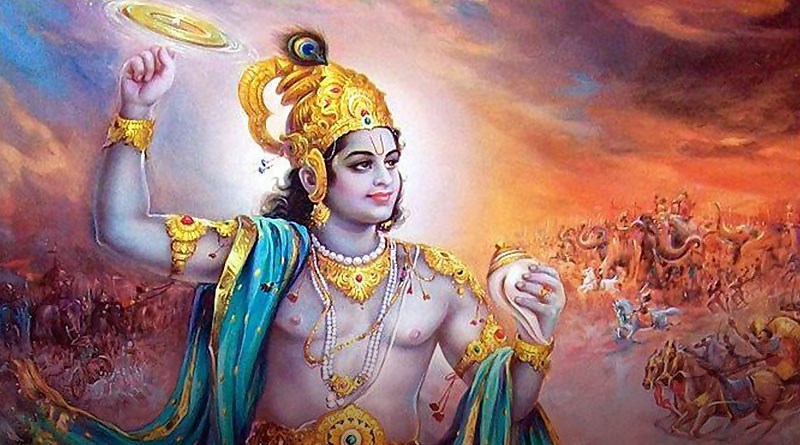
Therefore, gunakarma, as emphasised by the Geeta must be the criteria. This will preserve the Prataps, weed out the Man Singhs, and promote the Shivajis.
Finally, understand one thing. Whatever criticisms there are of PM Modi (and as an Andhraite, I can assure you there are a myriad), he may be the only viable national option at the present. If someone with his electoral majority, patriotism, and and nationwide popularity can only achieve so much (arguably swacch bharat was his biggest
success) while not pushing core dharmic issues, then what is that telling you? Perhaps things may not be as easy as you thought at the macro-level, and even the most
popular, patriotic politician can only do so much. That makes strengthening society all the more crucial, and emphasises why you too must do your fair share.
https://twitter.com/GrrrGraphics/status/917245449525895168
If you want to protect Bharat, if you want to protect Dharma, understand both first. This cannot be done not through a new set of ideologies and never-ending “isms”, but only through understanding Bharat and Dharma on their own terms. Hindutva is meant to occupy the space of Rajadharma. Reject Hindutva & Revive Rajadharma, that is the key not only to good governance, but also to protecting Dharmik Bharatiyas.
If you cannot fix the state, then fix society, and start by fixing yourself. If you yourself are greedy and selfish and ego-maniacal, why be surprised when politicians (who can change ideologies like clothes) are the same? As someone once said, “In a democracy, yatha praja, tatha raja“. Endlessly whining on social media is no solution. Most of you are too jealous of others to collaborate or help and too lazy to do useful things yourself. Again, if this is the case, why would a politician be any different. Any idiot can give “brilliant gyaan”—actually demonstrate a proven track record of substantive action, then talk. No wonder everyone from Y.S Jagan to S.M. Krishna has been rehabilitated by “saffron SM”—anything can be justified for politics as usual.
Does this mean all potential allies are dharmic? No. Should a genuine regional dharmic party be launched?—absolutely. But until people do that on the ground, you have to make the best of what you have. If BJP were a perfect party, why did dharma-committed Rajasthanis chafe under a BJP CM? Why are residents of Rajasthan and Jammu both calling for regional dharma parties?—it’s because they put all their eggs in one basket and realised that RW or LW, Lutyens is Lutyens. Delhi Durbaris of all stripes can sell out to the highest bidder, or are constrained from performing their agenda.
This leads into the importance of decentralisation. There are some who due to language politics directly impacting their community are demanding that 2 national parties with strong regional satraps are the way to go. But leave aside Congress (T.Anjaiah should be a case and point), where are the strong regional leaders in BJP? Most are directly accountable either to the BJP or its associated ‘Cult’ural Organisation—so why would a Congress B team be any different?
The Illusionary Matrix 🌐 pic.twitter.com/hjo7IRP4gb
— Navroop Singh (@TheNavroopSingh) July 6, 2015
A properly crafted Dharma platform mandates that Dharma-based regional parties come together at the centre for national interest. What was not properly enounced a millennium ago should be clear from Nitisara, and the expositions on Rajadharma we have provided—dharma mandates that dharmikas of all regions come together to defend dharma, or Bharatavarsha, when either are under threat. Neutral opportunists are better than outright Adharmis, and Dharma-oriented parties are better than both. All are certainly better than the epidemic of sanctimonious hypocrites. Cultural organisations that have no clue about Indian Culture don’t get to decide dharma. But until you build the alternative, don’t engage in politics to oblivion. For all the talk of appeasement and “fancy dress”, why have IT cells forgotten these pics? Both at home and abroad.
Readers at this stage may wonder, “All this sounds very good as a philosophical vision, but how can the average praja or municipal raja implement Rajadharma?“. Previous articles such as this one and this one, have outlined very specific actions. However, for the purposes of replacing Hindutva with Rajadharma, we have given a Restatement here of practical steps to implementing Rajadharma.
Implementation of Rajadharma
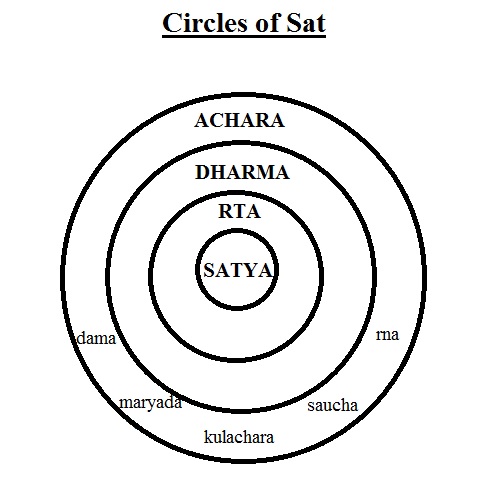
Definition of Dharma: Righteous upholding of cosmic order Rta expressing Truth (Satya).
Saamaanya Dharma: Principles of Common Dharma of all members of Society, which are:
Satya (truth), Yuktata (justice), Karuna (compassion), Saamyama (self-control ), Tyaga (self-sacrifice), Pavitrata (purity), and above of all Bhakti/Prema (Divine love)
Macro Directive of Rajadharma: Raksha, Paalana, & Yogakshema for all Dharmik Bharatiyas
Micro Directive of Rajadharma: Stree-Go-Brahmana Pratipaalana.
Strategy: Decentralised Dharma
De-centralised Dharma does not mean fragmenting India. On the contrary, it means preserving Essential Unity. It means preserving the federal structure of the republic rather than establishing a centralised 1-party tyranny—by any party. It means preserving national functions at the national level, state functions at the state level, district functions at the district level, and village functions at the village level.
De-centralisation means observing a federal structure if not via state than as a society.
National security policy is one that requires national level thinking, rather than regionalist
oriented horse-trading. In order to accomplish that, study of nitisastra and rajadharma by
youth is required. By the time they join state or national organisations, their attitudes
and mindsets are largely formed. Cultural education at a young age, either via family, bala
vihaar, gurukul, or even patashaala will ensure mature degree candidates have the requisite political maturity. In short, rather than a manifesto of headless policy, the goal should be for society to mould level-headed and clear-sighted strategic thinkers.
The Rajas of old proudly took the title Stree-Go-Brahman-pratipaalaka, because women, brahmanas, and cows were essential to Indic Civilization. Today, along with traditional Hindu Brahmin Pandits are Jain Acharyas, Buddhist Bhikkus, and Sikh Gianis. Protection of wife, mother, sister, daughter were the most noble duties. Preservation of cow critical to feeding society through cow-byproduct based agriculture. Patronage to (spiritual) brahmanas and traditional teachers imperative for safeguarding the memory and morality of Dharmik Sanskriti. All this is premised also on vinayam.
Indriya vijayasya moolam vinayam. Vinayasya moolam, vrddopa seva. Hence, respect for father, uncle, elder brother, senior essential to order and chain-of-command. It is time for our over-arrogant and under-qualified (and perennially incompetent) saffron wearing, hindutva braying, self-anointed “dharmrakshaks” to put their money where their mouth is and start implementing. Rajadharma has already been defined. What matters now is Samakaaleena Rajadharma and Samakaaleena Dharma. The Dharma of the times:
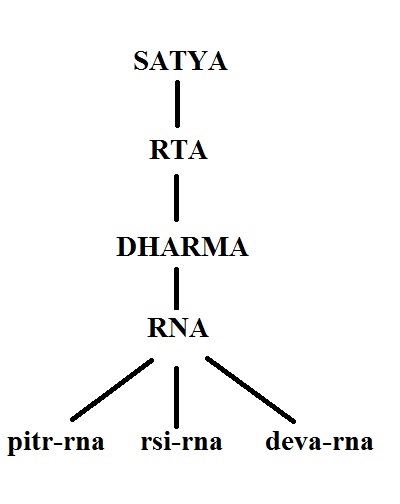
1. Respect, cherish, and when necessary, protect women.
2. Feed, shelter, and safeguard cows.
3. Give patronage to vedic brahmanas, jain acharyas, etc. Ensure their safety
4. Stop Engaging in and Rebuke own caste for Casteism.
5. Re-incorporate ‘Avarnas’, i.e. Dalits, as full members of Dharmic society
6. Do Dharmic Development. Feed the poor and sponsor the education of children
7. Jammu has established self-defence committees for communities
8. Designate, Design, and Drive the construction of community public works
9. Use common resources responsibly. Behave responsibly. Discuss responsibly
10. Pay attention to national and international news. Understand macro-politics.
11. Build societal unity, meet as a societal community, vote as a societal bloc
12. Study Itihaasa, Purana, and Niti to understand Rajadharma
13. Restore the Rajarishi as role model.
Explanation of Rajadharma Implementation
King Janaka, a Kshatriya, was a great statesman, administrator and also an exalted sage (Jnani).#Periyava #Hinduism
— Sage of Kanchi (@haraharasankara) April 2, 2019
The macro-directive of Rajadharma may be managed by actual political leaders (elected & otherwise), but the micro-directive can be maintained by even the average citizen. Indeed, it is an basic feature of Indian culture.
1.Respect, cherish, and when necessary, protect women.
Given the rise of radfem and MGTOW, this may be a difficult one to digest for “the new generation”, but when the power goes out, when the police don’t respond, when law and order breaks down—the relevance of this becomes apparent.
More than that, a societal attitude shift (among both women and men) is required. Worse than UC vs BC, South vs North, or Urban vs Rural, is Female vs Male. Gender wars are meant to divide society and make us forget the beauty of civilization in the first place. Put aside the foreign ideologies, understand what it actually means to be a Bharatiya Naari, and rediscover the sanctity of Shakti. Understand this basic aspect of Rajadharma, and everything else falls into place.
True. 498-A is being abused today, and men are increasingly the victim of false accusations. But there is a difference between page 3 and MNC harpies, and innocent women and girls being victimised by vidharmis. For the entitled to be corrected by society, first remind them of the value of men in the first place.
2. Feed, shelter, and protect cows.
True, India’s streets are notorious for being a bovine obstacle course, but this makes sheltering cows in gaushalas all the more necessary. If you don’t want “modern India” to have the indignity of cow-dung lined lanes, sponsor gaushalas run by temples and other such trusted religious organisations, to ensure these sacred animals are cared for.
3. Give patronage to traditional pandits & vedic brahmanas. Ensure their safety.
At the outset, individuals may be concerned that this is “casteist” since it mentions protection of brahmanas. But unlike so-called “casteless” hindutva, brahmana doesn’t refer to unaccountable “chalaks” and “pracharaks” issuing directives to PM. Rather, it recognises the critical role traditional pandits and vaidika brahmans (of the adhyatmik, rather than social media, variety) play in preserving our culture, heritage, and memory.
If Hindu History has a chance of being correctly communicated today, it is because of the selfless efforts of Pandits like Kota Venkatachalam garu. Karmakandin brahmanas in agraharas are not so accessible, but there are many community pandits who face no such ritual restriction and can run local pial schools for poor children of all backgrounds. Give patronage to them so they can share our traditional knowledge and education appropriate for the general masses.
The natural corollary to this applies to Jain Acharyas, Buddhist Bhikkus, and Sikh Gianis
4.Stop Engaging in and Rebuke own caste for Casteism
1. I am calling for a Hindu revolution and overthrowing of this most putrid constitution and corrupt sudhra rule whole sole object is to appeal to SC, MBC, OBC & BC and isolate the Brahmanas in particular. (continued in 2)
— Janamejayan (@Janamejayan) December 25, 2017
There are many who wish to ‘destroy caste’, and this is understandable particularly for dalits. However, in the past 70 years, how successful has this policy been? Some argue caste is now more entrenched than ever due to social media self-selection, etc. If this is the case, then perhaps the more effective policy would be to combat casteism. Casteism (jati dvesha) is anyways punishable per Sukra Niti. What is needed now is reincorporation of outcasted members of hindu society to ensure dignity to dalits.
5. Re-incorporate Dalits’, i.e. Avarnas, as full members of Dharmic society
After attack on @Tarunvijay, Uttarakhand temple to be "purified after being corrupted Dalits." What a shame.. pic.twitter.com/v3HUz5drMh
— Manak Gupta (@manakgupta) May 23, 2016
Varnashrama Dharma has been an obsession of both uber-traditionalists as well as outright enemies of Indic Civilization. And yet, the system that was prescribed is the chaturvarna vyavastha. There were four classes of Vedic society—the institutionalisation of a fifth represents a mutation rather than a manifestation of dharma. Therefore, Dharmic society must allow for a path returning so-called ‘dalits’ (better known as ‘panchamas’) to four-fold societal status. The purpose rather than reifying the caste system is instead to guarantee dignity for panchamas among dharmikas. Any community with the stigma ‘untouchable’ will not be able to live in dignity and self-respect. Therefore, the stigma should end by returning the fifth class back into the fourth (or others where applicable). The term ‘chandala’ was used for people outside the margins of society for forbidden practices. When this is not the case, why should they be called so?
Particularly at a time when so-called savarnas are openly consuming beef without being bahishkar’d, it is the height of hypocrisy to disallow dalits (that is avarnas) the chance to be readmitted in full to Dharmic society. Step-brotherly treatment is no way to build unity, and dalits and other such marginalised communities who refuse beef consumption and follow the basic stipulations of dharma have more right than beef-eating savarnas such as this dusht, to participate in dharmic society. The how may be more difficult than the whether, but time has come to explore such ceremonies consistent with the spirit of sastra.
6. Do Dharmic Development. Feed the poor and sponsor the education of children
Are we the generation that will find the courage to stop the ecocide? Or will our greed destroy our priceless enviroment for our children and future generations? #MotherEarth #SaveOurPlanet pic.twitter.com/jACu3gMpU3
— Jay Naidoo (@Jay_Naidoo) March 8, 2019
Dharmic development is an essential aspect of Rajadharma. It is true that in the competitive, technologically-driven modern world, it is imperative for Indic Civilization to keep up. This applies not only militarily or economically, but also politically and strategically. The problem is those with half-knowledge can only think in terms of binaries of communism and capitalism. Both are materialistic ideologies predicated on destruction of the spiritual. They spread selfishness and equate self-interest with selling out the national interest.
But that is the exigency of Dharmanomics. This is because Dharmic Development ensures Bharatavarsha remains competitive without losing its soul. People learn the directive of giving business to local small business over national rivals. It means feeding the poor and sponsoring the education of children. It means giving livelihoods so that families can be formed and that men can be taught how to fish.
7. Jammu has established self-defence committees for communities
This one speaks for itself. It is also why caste obsession and ego-based action must be discarded in favour of community based leadership and dharmic collaboration. This can apply at any level. Yes, there is caste, but also, colony, municipality, temple committee, and sampradaya society. Suggest or host such community meetings, without caste restriction.
Unlike Hindutva, Dharma does not believe in Hate. Hate is not a policy. Bharatiyas who integrate and assimilate will be treated with respect. But make no mistake, Dharma and Dharmikas will protect themselves.
8. Designate, Design, and Drive the construction of community public works
It may start as something simple as a residential rainwater harvesting, and may eventually grow to community or municipal water tanks & step wells. In the land of the monsoon, such public works (particularly in dry areas such as Rayalaseema or Rajasthan) are crucial to collect rainwater for the rest of the year. Work together as a family as a community or as a municipality to construct such public works. By working together as a team, villagers or mandal sevakas can even create basic dirt roads and roadside shade/shelters. If the local “raja” is remiss in rajadharma, let the community band together to ensure proper governance and public works. The ancient Indian village was practically its own republic anyway. Don’t let neta negligence result in your discomfort.
9. Use common resources responsibly. Behave responsibly. Discuss responsibly.
There is a near impossible sense of stubbornness among modern Indians that results in a roiling tempest of recalcitrance. A simple request to behave or even to contribute so much as an RT is met with petulance or sanctimony, as though anyone could have the effrontery to reduce the spoiled brat’s freedom by even a sliver. But a polite society is a civilised society (and an armed society is a polite society). Administrative requests for responsible uses of resources and for general responsible behaviour, should be met by cooperation. After all, sabhyata is a stepping stone to dharma.

What’s more, there is a practical aspect to this. With the myriad issues facing Indic Civilization, there simply isn’t time for the Argumentative Indiot to argue his way into oblivion. Eristic, self-serving reasoning has to be replaced with self-disciplined discussion premised on pragmatism.
10. Pay attention to national and international news. Understand macro-politics.
Its common for people to immediately drop off into despondency or despair if their “politikul sabiour” of the moment doesn’t deliver. But this is where it becomes crucial to understand macro-politics. Demonetisation was not about corruption or economic brilliance, but about this. The real reason for demonetisation won’t be found in Andhra or Maharashtra, but in Australia and Sweden.
It’s understandable if the general masses can’t wrap their heads around what is going on, but what excuse do wannabe elites have? Rather than mock Modi, or ridicule CBN, understand why, despite all the rhetoric, both are pushing the same policies pushed under congress. This is not anything unique. It’s why the time has come to look past rhetoric, slogans, and party labels, and see just why in fact there is so much in common between the oldest democracy and the largest.
11. Build societal unity, vote as a societal bloc.
This is also why casteism must be combatted. Caste wars result in fragmented voting. Whichever way you vote, vote as a bloc. No community manages 100%, and most don’t even manage 90%, but 80% is surely possible. If a small minority disagrees, so be it. Let them vote their way if they’re not swayed by your argument, and let them return if they realise their folly later. Emotional outburts are detrimental to unity.
Jammu has already shown the way here. Disenchanted with so-called ‘nationalist’ representatives, the people of Jammu are increasingly voting in independent candidates to fulfill their mandate. Thus, independent candidates signed on to the common dharma programme will safeguard the safety of Dharmikas rather than selling out in saffron garb.
12.Study Itihaasa, Purana, and Niti to understand Rajadharma
Rishis and Maharishis don’t take birth in the Kali Yuga, but the model that leaders of Bharatiya society should follow is that of Rajarishis. From Ajatashatru of Kashi to Janaka of Videha to Rama of Koshala to Shibi of Kuru to Yuddhisthira of Indraprastha, there has been a long and venerated history of Rajarishis. The only difference is that the Rajarishi of the Kali Yuga must follow the Niti of Sri Krishna. While doing the utmost to preserve the spirit of Dharma, the Raja must use every tactic to safeguard the praja.
13.Restore the Rajarishi as Role Model
King Janaka, a Kshatriya, was a great statesman, administrator and also an exalted sage (Jnani).#Periyava #Hinduism
— Sage of Kanchi (@haraharasankara) April 2, 2019
If no rishis are born in the Kali Yuga, that does not mean that Rajarishis cannot be made. For far too long has leadership been limited to the now debunked political model of Chanakya-Chandragupta, which has been detrimental to Dharma and India-at-large.
The truth is, spiritual leadership is the realm of Brahmanas and political leadership is the realm of Kshatriyas. To ensure the political revival, a revival of the kshatriya ideal is imperative. From Rajarishi Janaka to Sri Ram to Sri Krishna to Guru Gobind Singh, there has long been a long line of Rajarishis to give leadership when all seems lost. Discipline in appetites, dedication to the cause, and death in the protection of others were seen as necessary aspects of Rajadharma. It will take Rajarishis, and students committed to becoming them, to revive Rajadharma.
Rajarishi is neither a militaristic barbarian nor an over-refined manque. Instead, he is a
civilised master of sastra (study) and suhstra (sword). He meditates on jnaana kanda, but when necessary, applies koota niti.
Soldiering makes one a philosopher. Amongst Kshatriyas there have been great men of wisdom revered as Raja Rishis.#Periyava #Hinduism
— Sage of Kanchi (@haraharasankara) April 3, 2019
Rather than a fraudulent up-front celibacy to conceal close-door debauchery, it is better to have honest householders committed to family and future for the country. The true Rajarishi does not deny natural impulses, but only puts them to the service of nature and dharma, and remembers never to touch that which is not his. And that, more than anything else, is the need-of-the-hour.
Conclusion
The glory of this Mudra of Shahaji’s son Chattrapati Shivaji Maharaj will grow like the first day moon .It will be worshiped by the world & it will shine only for well being of people. #shivjayanti #शिवजयंती pic.twitter.com/bKIJBVSCbO
— Himanshu Patil (@mehimanshupatil) March 4, 2018
A Civilizational Revival requires more than mere pithy bromides and ‘renaissance’ festival self-celebration. It necessitates a commitment to common values, community custodianship, and individual responsibility. Awkward, self-serving definitions of ancient divisions of labour cannot be misused to accrue adharmic concentrations of power. What is instead required is a correct understand of the Dharmic Philosophy of Governance.
There are those that argue that hindutva has already provided for the requisite impetus. But the reality is that it has put the cart before the horse. It wants its ideological culture
to define our religion rather than have our dharma guide political culture. That is the
danger of ideology—it leaves the rhythm of social order and morality to the whims of madmen. Anyone who has read Animal Farm knows the danger of this and calls it out whether it is on the left or the right.
Sastra has, for all too long, been wrongly interpreted to give power with no responsibility. All varnas have tried to take advantage in their own way, with only avarnas, being at the brunt. It is time for Hindu society to put aside privilege and come together under common duty. Dharmasastra does not exist to preserve (or acquire) privilege. It was a means of social organisation. To understand it is not to merely rote-recite the letter but to embrace the spirit: Raksha, Paalana, Yogakshema. Society is not just code for caste or cabal, but for all to come together in common interest.
There is nobody to correctly interpret our Sastras and comment rightly now-a-days.#Periyava #Hinduism
— Sage of Kanchi (@haraharasankara) March 23, 2019
Bharatavarsha is facing serious issues that can only be solved by a serious people. Cult slavery to an alleged ‘cultural organisation’ is not real culture. It is possible to vote BJP without becoming a slave of Nagpur. Learn from the people of Jammu who are increasingly electing independent candidates pushing the priorities of the people of Jammu. They have realised that Hindutva and its ‘volunteer organisation’ are an albatross on the neck of Hindus which gives the appearance of nationalism without actually delivering on it. A Church of Hindutva is not Dharma. The sooner this Cult Of Nagpur is dusted into the dust bin of history (along with that other CON known as INC) the better for all Bharatiyas. Reject Hindutva & Revive Rajadharma. The future of Bharatavarsha and the world itself depends upon it.

References:
- Singh, G.P. Political Thought in Ancient India. New Delhi: DK Printworld. 2005
- Fukuyama, Francis. The Origins of Political Order: From Prehuman Times to the French Revolution. New York: Farrar, Straus and Giroux. 2011
